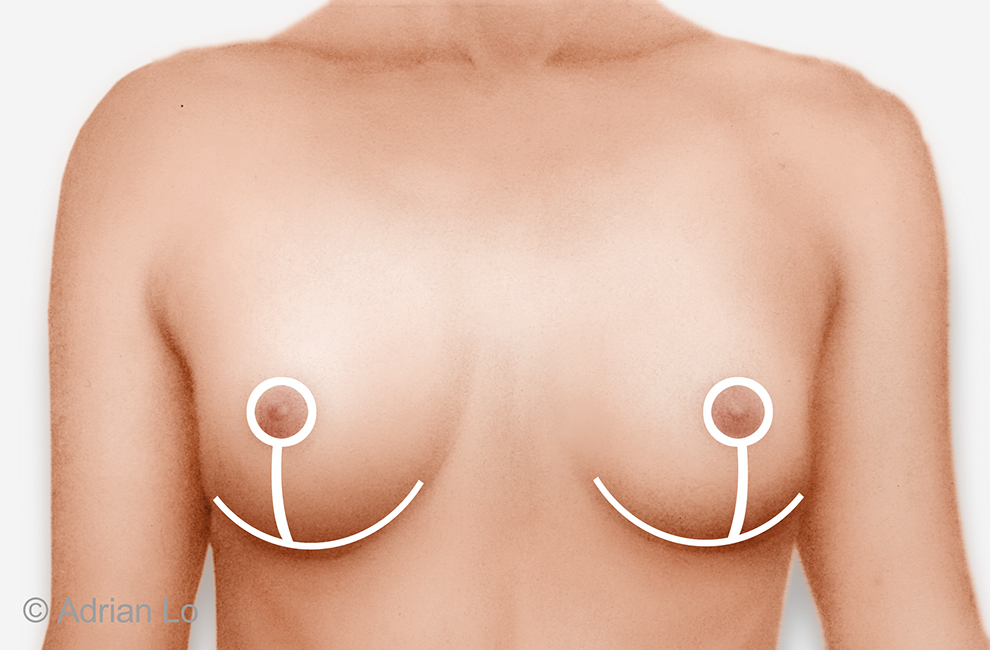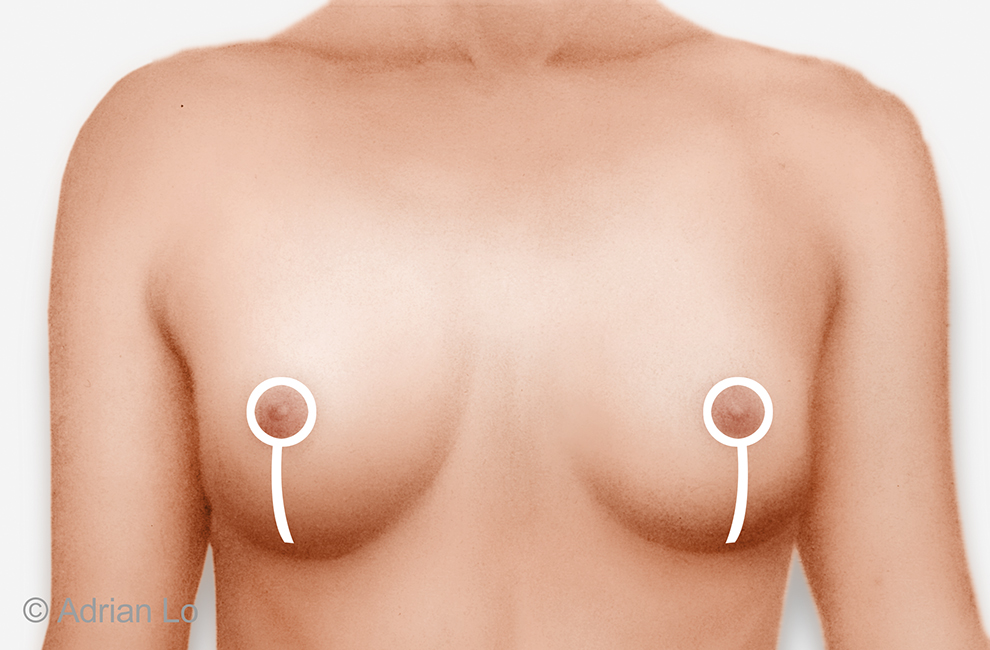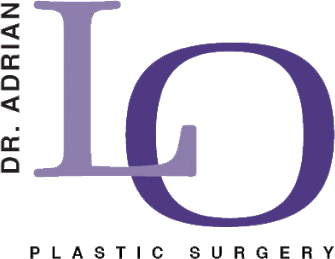Breast reduction surgery can bring life-changing benefits. You’ll enjoy relief from upper back and neck pain, say goodbye to shoulder grooving from bra straps, and find that clothes fit better and exercise becomes more enjoyable. With your new, smaller, lifted breasts, you’ll feel more confident and comfortable.
WIth all breast reduction surgical techniques, there will be incisions or scars on your breast. While you focus on achieving your ideal breast size and shape, understanding the breast reduction scar timeline and incision healing allows you to learn how to improve breast scar appearance.
The transformation process follows a path, with each healing phase bringing you closer to your final results. Your surgical incisions will evolve over the coming months, becoming less noticeable with proper care and attention. Knowledge of what to expect and how to treat your incisions or scars makes this recovery period both manageable and rewarding.
Learn About: What Does Submuscular Breast Implant Placement and The Dual Plane Technique Mean?: A Guide for Patients
Types of Breast Reduction Surgery Scars
Different breast reduction approaches create varying scar patterns, each designed to achieve specific aesthetic goals while minimizing breast reduction scars. Your plastic surgeon will recommend the most appropriate technique based on your individual needs and desired outcomes.
Anchor or Inverted T Scar Pattern for Breast Reduction
The anchor pattern technique allows for comprehensive breast reduction and reshaping capabilities. This approach includes incisions around the areola, vertically down to the breast fold, and horizontally along the breast fold, creating maximum access for tissue removal and contouring.

This technique which is the most commonly performed works optimally for women seeking significant breast size reduction and dramatic shape improvements. The anchor pattern enables your plastic surgeon to address excess skin and tissue from all breast areas while achieving excellent positioning and proportion.
While this approach initially creates more incision lines, these typically fade over time. Most women find the dramatic improvements in breast comfort and appearance outweigh any concerns about scar visibility.
Vertical or Lollipop Technique for Breast Reduction
The vertical or lollipop technique for breast reduction creates incisions around the areola and vertically down to the breast fold, eliminating the horizontal component. This approach reduces total scar length while still enabling significant breast reduction and excellent shaping results.

This technique proves ideal for moderate breast reductions, providing breast contouring capabilities while minimizing scars. The vertical approach works particularly well for women seeking balanced reduction with minimal visible scarring.
The lollipop technique without the horizontal incision of the anchor requires surgical expertise to achieve optimal results. When performed skillfully, this approach often produces excellent long-term aesthetic outcomes. It is important to have an assessment by a qualified plastic surgeon to see if you are a candidate for this technique of breast reduction.
Periareolar Technique for Breast Reduction
The periareolar technique creates incisions only around the areola, offering the most discreet scarring option available. This approach limits the amount of tissue removal possible, making it suitable for minor breast reductions focused on lifting and subtle size adjustment.
This technique works for women seeking minor breast lifting with minimal volume reduction. The periareolar approach addresses sagging concerns while maintaining natural breast volume and creating virtually invisible scar lines.
While periareolar scarring offers optimal discretion, patient selection remains important for achieving desired results. Your breast characteristics, skin quality, and aesthetic goals all influence whether this technique will meet your aesthetic expectations.
What to Expect in the Breast Reduction Scar Timeline
The breast reduction scar timeline unfolds in distinct phases, each offering opportunities to support optimal healing.
First Month After Surgery
Your initial two weeks represent the initial phase of breast reduction recovery. During this period, your surgical incisions begin their healing transformation. You will notice the incision healing nicely with surgical glue or steristrips tapes on the incision supporting the early breast reduction healing stages.
Proper incision care becomes a priority during this initial recovery period. You will need to keep your incisions clean and dry. Cleansing may be done with a recommended antibacterial soap. Antibiotic ointment may also be prescribed. Most patients find the prescribed care routine straightforward and manageable.
Activity modifications during this phase protect your healing tissues and support optimal scar formation. Light daily activities remain comfortable, while your body focuses energy on the healing processes taking place. Wearing a supportive bra to avoid excessive movement of your breasts is important to maintain proper healing.
One to Three Months Post-Surgery
The one to three-month period brings continued improvements in your breast reduction scars. Your incisions or scars begin flattening and transitioning to lighter colors during this timeframe. The initial healing phase gives way to visible progress that many patients find encouraging.
As your breast swelling goes down, you will begin to appreciate more of your final breast contour and positioning. Most women feel comfortable returning to their normal routines, though your plastic surgeon will guide you on appropriate activity levels for continued healing success.
This period often marks when gentle scar massage techniques are recommended to begin. Your plastic surgeon will demonstrate effective massage methods that promote healthy circulation and tissue development around your incision areas.
At this time, scar creams and scar products will be recommended to help you achieve the best scar possible.
Six Months to One Year Recovery Period
The extended six-month to one-year timeframe showcases the most improvements in your breast reduction scar timeline. Your incisions continue their evolution toward thin, light lines that blend naturally with your skin tone. This extended healing period allows your body to complete the complex processes that create your permanent results.
Your final breast shape and size become fully apparent during this phase. Any remaining minor swelling resolves completely, revealing the beautiful results you envisioned when choosing breast reduction surgery.
This timeframe represents the completion of your healing journey, with most patients feeling very pleased with both their breast appearance and scar visibility by the twelve-month mark.
How Long Do Breast Reduction Scars Take to Heal
Understanding how long breast reduction scars take to heal helps you plan for the complete recovery journey ahead. The healing process involves multiple overlapping phases that work together to create your final aesthetic outcome.
Initial Healing Phase Timeline
The initial healing phase spans six to eight weeks after your breast reduction procedure. During this period, your body creates the underlying scar tissue that will eventually mature into your permanent result. Your incisions achieve initial closure within the first two weeks, while deeper tissue healing continues for several months.
Regular follow-up appointments with your plastic surgeon during these first eight weeks ensure optimal healing progress and provide opportunities to address any questions about your recovery experience.
Scar Maturation Process Duration
Scar maturation represents the longest and most rewarding phase of your healing journey, typically lasting twelve to eighteen months. During this period, your incisions gradually soften, flatten, and lighten as your body perfects the final scar tissue formation. This natural process requires patience but delivers improvements in scar appearance.
The most noticeable changes occur between months three and twelve, with continued refinements extending beyond the one-year mark. These gradual improvements reflect the sophisticated biological processes your body uses to create optimal healing outcomes.
Consistent scar care after breast surgery during this maturation period significantly influences your final results and provides you with an active role in optimizing your aesthetic outcome.
Factors That Influence Healing Speed
Several factors directly impact your breast reduction healing stages and final scar appearance. Age influences healing speed, with younger patients often experiencing faster tissue repair and less visible final scarring. Your individual skin characteristics and genetic background also play important roles in determining your healing response.
Lifestyle choices significantly affect your recovery timeline and final results. Maintaining excellent nutrition and hydration supports optimal tissue repair, while avoiding smoking ensures proper blood flow to healing areas. Protecting your incisions from sun exposure prevents permanent discoloration that could affect long-term scar visibility.
Following your plastic surgeon’s post-operative instructions ensures you achieve the best possible results within the expected timeframe. Patients who maintain consistent incision care and attend scheduled appointments for evaluation typically experience the most satisfying outcomes.
Breast Reduction Healing Stages and Scar Development

Breast reduction healing stages follow a biological sequence that transforms your surgical incisions into barely noticeable lines. Understanding these phases helps you recognize healthy healing patterns and appreciate the sophisticated processes taking place.
Inflammatory Phase Characteristics
The inflammatory phase begins immediately after surgery and continues for approximately one week. This phase activates your body’s natural healing mechanisms through increased blood flow to the surgical area. You will notice some swelling, warmth, and redness around your incisions during this period, which indicates healthy healing activity.
Specialized healing cells arrive at the incision sites to support tissue repair and maintain a clean healing environment. This biological response creates the initial tenderness you experience, though most patients find this tenderness easily manageable with prescribed comfort measures.
Proliferative Phase Changes
The proliferative phase typically begins around day three and continues for approximately three weeks. During this active period, your body constructs new tissue to strengthen and close your surgical incisions. New blood vessel formation supplies essential nutrients to healing tissues, while specialized cells produce collagen to create strong, healthy scar tissue.
Your incisions demonstrate visible healing progress during this phase, with skin edges growing together in a remarkable display of your body’s repair capabilities. The initial scar tissue appears somewhat elevated, which represents normal and expected healing activity.
Most patients notice decreased sensitivity and improved comfort as the proliferative phase progresses. The new tissue continues strengthening throughout this period while maintaining protection from excessive stretching.
Remodeling Phase Improvements
The remodeling phase begins around three weeks post-surgery and continues for twelve to eighteen months. This extended phase transforms your initial healing into mature, refined scars through sophisticated tissue reorganization. Collagen fibers arrange themselves into stronger, more organized patterns that create optimal long-term results.
Your incisions gradually flatten, soften, and lighten throughout this remodeling period. The elevated appearance from earlier phases resolves as your body refines the collagen structure and optimizes scar formation.
Appropriate scar care techniques during remodeling can enhance your final results significantly. Scar creams, gentle massage, consistent moisturizing, and sun protection all support optimal tissue remodeling and minimizing breast reduction scars.
Breast Reduction Scar Treatment Options
Professional breast reduction scar treatment options significantly enhance the final appearance of your surgical incisions. These proven treatments work most effectively when initiated at appropriate times and continued consistently throughout healing.
Topical Scar Treatment Products
Silicone-based treatments represent the gold standard for improving breast reduction scar appearance. These products optimize moisture levels and create protective barriers over healing incisions, significantly reducing scar thickness, redness, and overall visibility.
Begin silicone treatments approximately three to four weeks after surgery, once your incisions achieve complete closure. Consistent application as directed, typically once or twice daily for several months, delivers noticeable improvements within three to six months of regular use. Silicone treatments may come in a sheet form or a liquid gel.
Focus on proven silicone-based products recommended by your plastic surgeon rather than unproven alternatives. The American Academy of Dermatology recognizes silicone treatments as effective options for scar improvement and prevention.
Professional Laser Therapy Options
Laser treatments can dramatically improve breast reduction scar appearance when performed by qualified professionals. Fractional laser resurfacing breaks down irregular scar tissue and stimulates healthy collagen formation, resulting in smoother, less visible scars with improved texture and color.
Most plastic surgeons recommend beginning laser treatments at 4 to 6 weeks after surgery. This timing allows initial healing completion while maximizing laser therapy effectiveness for optimal aesthetic enhancement.
Different laser technologies address specific scar characteristics. Some focus on reducing redness and discoloration, while others improve texture and thickness. Your plastic surgeon will recommend the most appropriate laser treatment based on your individual scar characteristics and goals.
Steroid Injection Treatments
Steroid injections help reduce elevated, thickened scars that may develop during healing. These targeted treatments work by breaking down excess collagen formation and reducing inflammation within scar tissue, proving particularly effective for patients prone to raised scarring patterns.
Treatment typically involves multiple injection sessions spaced four to six weeks apart. Your plastic surgeon monitors your response and adjusts treatment frequency to optimize results while ensuring patient comfort throughout the process.
Steroid injections work most effectively when combined with other breast reduction scar treatment methods. Your plastic surgeon may recommend combining injections with silicone treatments or laser therapy for comprehensive scar management.
Learn About: Why Are Saline Breast Implants Still Popular?: Benefits, Safety, and Patient Preferences
Proven Strategies for Minimizing Breast Reduction Scars
Implementing evidence-based care strategies from the beginning of recovery significantly impacts your final scar appearance. These proven approaches help optimize healing and minimizing breast reduction scars for the best possible aesthetic outcome.
Proper Incision Care Techniques
Careful incision care during the first weeks after surgery establishes the foundation for optimal scar healing. Keep your incisions clean and dry according to your plastic surgeon’s instructions. Gentle cleansing with mild soap and water, followed by gentle drying, supports healthy tissue formation.
Avoid applying harsh chemicals or strong antiseptics directly to your incisions, as these can damage delicate healing tissues. Instead, follow the gentle care routine provided by your plastic surgeon for optimal healing support.
Appropriate surgical bra support during initial healing also contributes to better scar formation. The gentle compression and positioning help reduce tension on your incisions while providing comfort during daily activities.
Sun Protection and UV Avoidance
Protecting your healing incisions from sun exposure prevents permanent darkening and discoloration. UV radiation can cause newly formed scar tissue to produce excess pigmentation, resulting in darker, more prominent scars that may never fully blend with your natural skin tone.
Keep your incisions covered or apply broad-spectrum sunscreen with at least SPF 30 for the first year after surgery. Even brief sun exposure during early healing phases can cause lasting scar discoloration that affects your long-term aesthetic results.
Consider sun blocking or SPF clothing that provides chest coverage when spending extended time outdoors during your first year of recovery. This simple protection significantly reduces permanent scar discoloration risk and maintains your aesthetic investment.
Healthy Lifestyle Choices for Healing
Your overall health directly impacts how effectively your body heals from breast reduction surgery. Proper nutrition provides essential building blocks for healthy scar tissue formation. Focus on adequate protein intake, vitamin C, and zinc to support optimal healing processes.
Maintaining good hydration helps preserve skin elasticity and supports cellular repair mechanisms. Consistent water intake throughout recovery supports healing efficiency and contributes to better final scar quality.
Avoiding smoking and limiting alcohol consumption significantly improves healing outcomes. The Mayo Clinic emphasizes how smoking reduces blood flow to healing tissues, while excessive alcohol can interfere with natural repair processes. These lifestyle modifications support faster healing and superior scar appearance.
Expert Breast Reduction Recovery Guidance in Philadelphia
If you’re considering breast reduction surgery, reviewing before and after images can be a helpful way to understand the potential outcomes. Our Philadelphia plastic surgery specialists at Dr. Adrian Lo will ensure you understand the breast reduction scar timeline and receive the support needed for optimal recovery results. Schedule a consultation to discuss your breast reduction goals and learn about advanced techniques that promote excellent healing outcomes.
